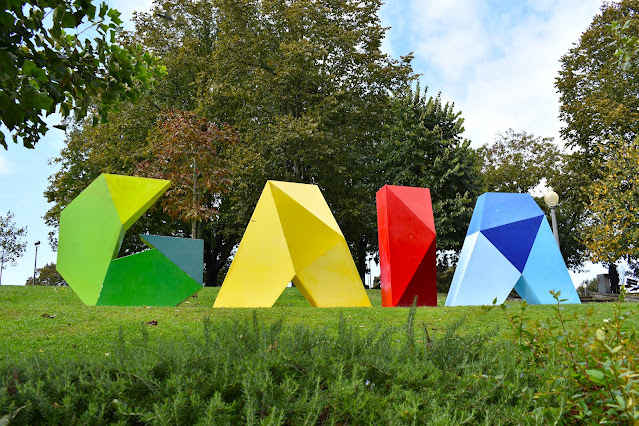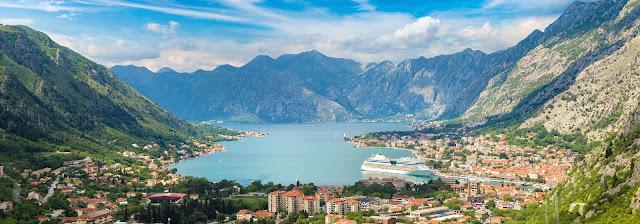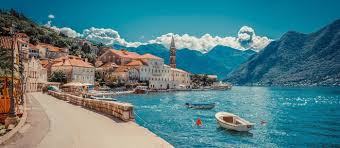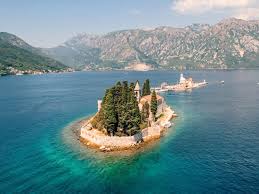As with anyplace we visit, particularly visiting another country; there are things we should know. Porto, Portugal was an interesting place to visit and one of the most beautiful places I've ever visited, especially for a city.
That being said, there are some things we all should know. Here are some in no particular order.
1. Take the public transportation. If you can't get around on the Metro, trains, buses, cable cars, tuk tuks, water taxis, funicular, elevator, taxis, magic train, tram, or walking; then how do you get around? Driving in this city is ridiculous. That's for professionals. The best part about getting around is that there are so many ways to do it. You can stop by the Sao Bento Train Station to weigh your options, because most travel passes for convenience are available there. Other things like the funicular and cable cars you pay upon arrival.
2. How to find your way around the old city. I was surprised how easy it was. I studied maps online for hours before I left home, and in true fashion; it looked a lot different when I arrived. The best thing to do is just use Google maps. They work really well in Porto and everywhere I went in Portugal. This is a progressive country, so no problems.
One of the great things about Porto is that while looking at the city and the river gorge from above makes it look surreal and overwhelming; once you spend a day or two there, you won't need your maps for much. It all becomes easy quick and then you can just enjoy your trip.
For buying metro and bus passes, go to Sao Bento Train Station. In the ticketing area, there's a special window for tourist issues Monday through Friday. They can handle anything you need on the weekend and the regular windows. Portuguese folks who work with tourists tend to speak many languages, so there wasn't much of a barrier for us anywhere in town.
One of the things that I loved about Porto was the Wi-Fi. In several places Porto has free Wi-Fi for all. It's quick and easy to sign into and is called Porto Free Wi-Fi. I used it along the riverfront, in several cathedrals and churches and at all the city markets. Considering that sometimes our services are a bit wonky when traveling; this is a great perk of hanging out in Porto.
3. There are two cities along the Douro River; not one. Villa Nova de Gaia or Gaia as the locals call it is the side with the cable cars and most of the locations to try Port Wine. It is also the best place in the area to watch the sunset from the park just off the metro line or the walls above it. You can't miss it.
The great thing about these two cities is that they work together in many ways. Buses and the metro run in both. You can take a boat tour along the river from either side, but it is cheaper in Gaia. It may be a little less expensive to eat and stay in Gaia as well.
Just remember, the views are equally gorgeous, regardless of the side of the river you are on.
4. City Walls. This is something to sort out when in Porto. There are a lot of city walls, because it is a very old city on what is virtually a cliff. Some you can walk and stand on, and some you can't. In the Jewish Quarter are some of the oldest city walls. You can visit the area and see all the great views from there.
Across the river in Gaia, there's a monastery turned military establishment that has a terraced section of old city walls overlooking the river. You can walk up the steep drive and have amazing views of the Douro and Porto and hang out up there most of the day if you like. It's also a great place to watch the sunset from.
Most of the Ribeira (the old town riverfront area) is along ancient city walls. These aren't typically walking places but places that house businesses that you can shop and eat in. Above, at the Porto Cathedral there is also a portion of city walls with amazing views that you can visit while visiting the Cathedral.
Then there was the one that threw me. Next to the Luis I Bridge, there's a funicular. Great ride with great views. This takes you to city walls that look like castle walls. You disembark the funicular and exit right next to them. I thought for sure as I was looking at the area that you could enter the grassy area inside the walls and look around. It looked that way and the funicular was designed to bring us there. What was I supposed to think?
We visited the lovely Igreja de Santa Clara for 4 Euros hoping that we would be able to see the grounds on the other side of the church that seemed accessible from there. The church was lovely, and I was very happy with my visit, but there still was no access to the walled area. Turns out, the walls are unstable and no one can walk close to the top of them. Bummer, but good to know.
5. Going out has a learning curve in Portugal. I found several idiosyncrasies. I say with this one that taking a city tour clears up a lot of things. It helps you get around, and the guides will be very honest about tourist traps. Two things that we saw but decided not to bother with were two of the most famous stops in the city. We decided not to go to the Majestic Cafe or to the Livraria Lello Bookstore. The prices were high, the lines were long. No offense to J. K. Rowling, but I didn't prioritize these places. We also didn't go inside the WOW Complex. High prices and not enough substance to warrant it.
Our tour guide also gave us advice on Port Wine tasting, and he was spot on. Caves Ferreira amongst the lineup of places in Gaia, where the wines are located, is the authentic only Portuguese owned wines for tasting. It was said to be the most authentic experience and it was.
The other Port Wine cellar and tasting that was recommended to us was Casa Ramos Pinto. This was the least expensive tour and tasting in the bunch and it wasn't short on quality. We went, we loved it, and we returned for a second visit and glass of Port later on in our trip. I highly recommend it there and the people there are fabulous.
6. When do you do it and how do you pay for it? All excellent questions in Porto. Portugal is virtually a cashless society. You can buy most things by tapping your card. The locals call it tapping. They ask if cash or tap. You can buy metro tickets by tapping. You can do your laundry by tapping. You can shop at a city market by tapping. It's very convenient.
However, there are a couple of things you will need cash for. If you want that local experience dining, you may find yourself in a restaurant that only takes Portuguese credit cards. All others must pay cash. Most of these restaurants have a sign by the entrance explaining this. I also recommend you check online before you go. Another place that you will need cash is if you board a bus for a single ride. You can purchase day passes at the train station that you can tap, but if you need to pay for a single ride you will need cash. Most other things in Porto are tap and go.
Also, while talking about money, do you tip? Interesting question. I promise you that no one will be offended if you don't tip. They don't rely on tips as Americans do. However, they will be thrilled if you do, so your choice.
7. When to go? I learned some things. First, don't expect to eat dinner before 7 pm. Probably later. Portugal is a get a nosh in the afternoon and eat late kind of place. You literally will have a hard time finding an actual restaurant open before 7 for dinner. That being said, there are tons of places to get a snack in the afternoon or a coffee or a drink. Take advantage of that because it's a great way to slow down and enjoy the day.
Another thing that we ran into with time was summer hours vs. winter hours. Portugal is warm. Hours will be listed for summer and winter online. When is summer over and when does winter begin and vice versa? I didn't really find anyone who knew for sure. Always check the hours for that day before you go. It cuts down on surprises.
8. The last thing I'll mention in this installment is the roads and other surfaces. This is an advice piece on practical things you should know when visiting Porto, and the tiles are important.
The roads, the sidewalks, the stairs, the walls are all covered in tiles. The older the area, the more tile surfaces there are. On the walls they are fantastic. I saw some of the most beautiful walls I've ever seen in my life there. But, on the roads and sidewalks, tiles can actually present a bit of a challenge.
The tiles all over Bolhao, the neighborhood we stayed in were glazed tiles. The roads and sidewalks were like mosaics and they were beautiful. Until it rained. I was wearing hiking shoes that I often wear in the woods over crazy terrain and I was slipping a bit on those wet glazed tiles. Just a caution. Once I realized that the tiles could be slippery when wet, I adjusted. It wasn't that big of a deal, just good to know.
There you have it. Some more advice on visiting Porto. I loved the city so much, you have no idea. I hope that you all get a chance to visit sometime. I want you to know that I learned a lot of little need to know things while there, and it would never stop me from going. There was nothing that made my trip unpleasant. It was a great place to visit, so don't worry about little things, pack your bags and enjoy!
https://portugalgetaways.com/en-us/destination/oporto/plan-your-trip/tips-information-porto
https://msurlaroute.ca/12-things-to-know-before-visiting-porto/
https://www.fodors.com/world/europe/portugal/porto-and-the-north/places/porto
https://travel.usnews.com/Porto_Portugal/Things_To_Do/Free/
https://www.plumguide.com/journal/areas-to-avoid-in-porto
https://activitiesinportugal.com/10-things-not-to-do-in-porto/
https://www.introducingporto.com/public-transport
https://porto.travel/transport/
https://portoalities.com/en/what-are-the-best-restaurants-in-porto-for-a-low-budget/
https://tasteporto.com/7-perfect-spots-to-watch-the-sunset-in-porto/
https://gaiathehomeofportwine.com/en/2023/10/31/unmissable-places-sunset/
https://www.eurocheapo.com/blog/portugal-visiting-porto-budget.html
https://www.ramospinto.pt/en/verify/?next=/en/
































































